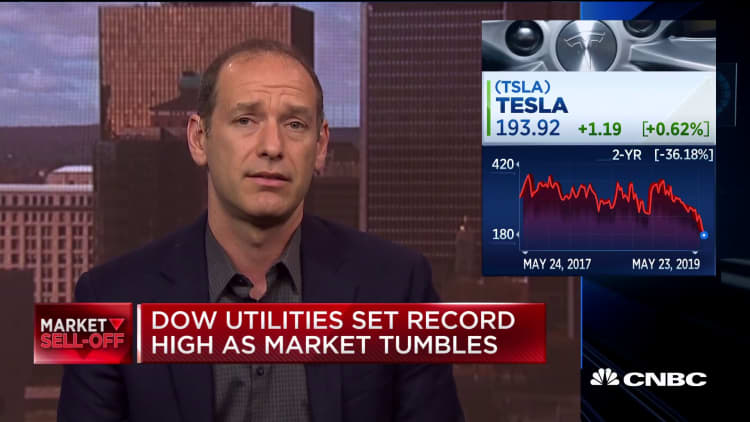The National Transportation Safety Board says driver error and the design of Tesla's Autopilot system were both to blame in a crash that saw a Model S collide with a parked fire truck in Southern California last year.
In a highway accident brief updated on Wednesday, the NTSB wrote:
"The probable cause of the Culver City, California, rear-end crash was the Tesla driver's lack of response to the stationary fire truck in his travel lane, due to inattention and over reliance on the vehicle's advanced driver assistance system; the Tesla's Autopilot design, which permitted the driver to disengage from the driving task; and the driver's use of the system in ways inconsistent with guidance and warnings from the manufacturer."
The investigation marks the second time the NTSB said limitations of Tesla's Autopilot system shouldered at least some of the blame for a serious crash. The system is a big selling point for Tesla cars, and for investors in the company. In fundraising pitches to investors earlier this year, CEO Elon Musk said self-driving systems would help turn Tesla into a business with a half-a-trillion dollar market cap. A regulatory crackdown could hamper Tesla's speed to market with "robotaxi ready" vehicles.
"When an investigative authority concludes the design of something you made has contributed to a serious accident, that is bad news for an automaker," said Mike Ramsey, senior automotive research director at Gartner.
"Tesla has not always been super clear about Autopilot. They say in the fine print this was designed as a Level 2 system, and you're supposed to keep your hands on the wheel. But then they will also talk about and demonstrate this system as if it's a driverless car. This creates an environment where drivers wink and say we know it's not supposed to be used this way, but we'll just drive with our hands off the wheel."
Ramsey said one ramification of the NTSB report is that Tesla could face a recall if other vehicle safety authorities, including the National Highway Safety Administration and others around the world, agree with the NTSB's conclusions and decide that flawed Autopilot design can cause serious accidents.
A Tesla spokesperson said:
"Tesla owners have driven billions of miles with Autopilot engaged, and data from our quarterly Vehicle Safety Report indicates that drivers using Autopilot remain safer than those operating without assistance. While our driver-monitoring system for Autopilot repeatedly reminds drivers of their responsibility to remain attentive and prohibits the use of Autopilot when warnings are ignored, we've also introduced numerous updates to make our safeguards smarter, safer and more effective across every hardware platform we've deployed.
Since this incident occurred, we have made updates to our system including adjusting the time intervals between hands-on warnings and the conditions under which they're activated."

In the Culver City crash, the 2014 Model S that hit the fire truck was operating with Autopilot capabilities that included traffic aware cruise control, auto steer, automatic emergency braking, warnings for forward collisions, lane departure, side collisions and automatic high beam headlights. (That was Tesla's state of the art at the beginning of 2018.)
Newer version of Tesla Autopilot have additional capabilities, and Tesla remains distinct in its ability to update its cars' computer systems "over the air," without requiring customers to take them to a service technician.
The NTSB is looking into two other crashes that involved the use of Tesla Autopilot, including whether or not advanced driver assistance systems contributed in any way to a fatal Model 3 crash in March in Delray Beach, Florida.
Follow @CNBCtech on Twitter for the latest tech industry news.


